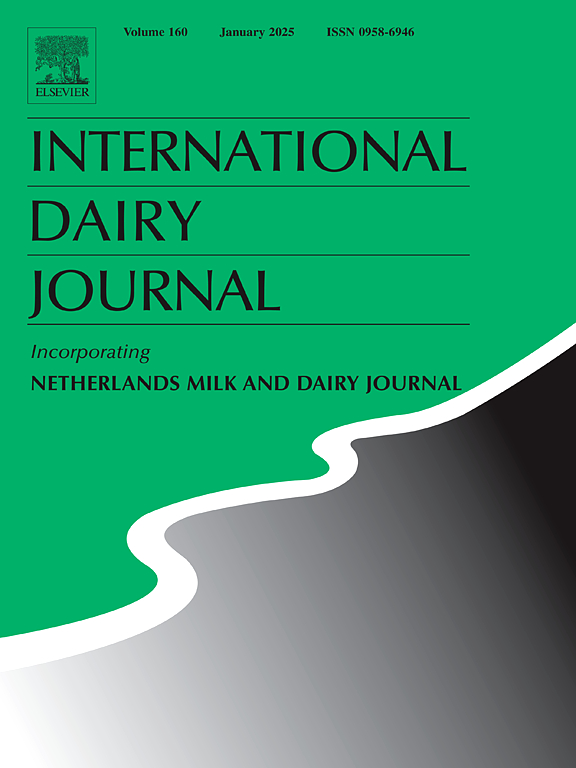Biomass production in whey permeate and spray drying of a potential probiotic strain from human breast milk, Bifidobacterium animalis subsp. lactis INL1
IF 3.1
3区 农林科学
Q2 FOOD SCIENCE & TECHNOLOGY
引用次数: 0
Abstract
Whey permeate (WP), a by-product of cheese whey treatment, constitutes a sustainable and economical alternative to synthetic media for probiotic biomass production. Likewise, spray drying (SD) is a rapid and cost-effective alternative to freeze drying in industrial practice. This study aimed to optimise the production of a spray-dried culture (SDC) of Bifidobacterium animalis subsp. lactis INL1. Biomass production on WP was optimised by analyzing the effects of yeast extract and pH on bacterial growth, survival during spray drying, and resistance to simulated gastric digestion. Additionally, pH, inlet temperature, and drying matrix effects were evaluated for their impact on strain resistance during SD and storage. WP proved to be a suitable ingredient for B. lactis INL1 biomass production. Acidic culture conditions yielded superior results, and all tested factors significantly influenced SDC performance. These findings highlight the usefulness of optimization strategies to define effective production conditions for probiotic cultures.
求助全文
约1分钟内获得全文
求助全文
来源期刊

International Dairy Journal
工程技术-食品科技
CiteScore
6.50
自引率
9.70%
发文量
200
审稿时长
49 days
期刊介绍:
The International Dairy Journal publishes significant advancements in dairy science and technology in the form of research articles and critical reviews that are of relevance to the broader international dairy community. Within this scope, research on the science and technology of milk and dairy products and the nutritional and health aspects of dairy foods are included; the journal pays particular attention to applied research and its interface with the dairy industry.
The journal''s coverage includes the following, where directly applicable to dairy science and technology:
• Chemistry and physico-chemical properties of milk constituents
• Microbiology, food safety, enzymology, biotechnology
• Processing and engineering
• Emulsion science, food structure, and texture
• Raw material quality and effect on relevant products
• Flavour and off-flavour development
• Technological functionality and applications of dairy ingredients
• Sensory and consumer sciences
• Nutrition and substantiation of human health implications of milk components or dairy products
International Dairy Journal does not publish papers related to milk production, animal health and other aspects of on-farm milk production unless there is a clear relationship to dairy technology, human health or final product quality.
 求助内容:
求助内容: 应助结果提醒方式:
应助结果提醒方式:


